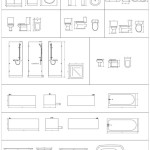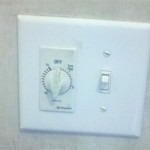Drop-In Bathroom Sink Installation: A Comprehensive Guide
Replacing a bathroom sink can be a rewarding DIY project that transforms the aesthetics and functionality of your bathroom. Drop-in sinks, also known as top-mount sinks, are a popular choice due to their ease of installation and wide availability. Here's a comprehensive guide on how to install a drop-in bathroom sink:
Materials and Tools Needed:
- Drop-in bathroom sink
- Faucet and hardware
- Plumber's putty or silicone caulk
- Adjustable wrench
- Basin wrench
- Utility knife
- Measuring tape
- Level
Step 1: Prepare the Vanity
Turn off the water supply to the sink and disconnect the old faucet and drain assembly. Clean the vanity top thoroughly and remove any debris or residue. Mark the center point of the sink opening with a pencil or measuring tape.
Step 2: Apply Plumber's Putty or Caulk
Roll out a rope of plumber's putty or apply a bead of silicone caulk around the rim of the sink. This will create a watertight seal between the sink and the vanity top.
Step 3: Place the Sink
Carefully place the sink over the putty or caulk, aligning the center point with the marked point on the vanity. Press down firmly to ensure the sink is properly seated.
Step 4: Level the Sink
Use a level to check if the sink is level from side to side and front to back. Adjust the sink as needed by placing shims underneath it.
Step 5: Tighten the Mounting Bolts
Most drop-in sinks come with mounting bolts that secure the sink to the vanity. Tighten the bolts using an adjustable wrench, but do not overtighten.
Step 6: Install the Drain Assembly
Apply plumber's putty to the base of the drain assembly and insert it into the drain hole. Hand-tighten the drain nut at the bottom of the sink.
Step 7: Install the Faucet
Position the faucet on the sink and insert the mounting bolts from below. Tighten the bolts using a basin wrench, but be careful not to damage the faucet.
Step 8: Connect the Water Supply
Connect the hot and cold water supply lines to the faucet, ensuring they are properly sealed. Turn on the water supply and check for leaks.
Step 9: Clean Up
Remove any excess plumber's putty or caulk around the sink and vanity. Clean the sink and faucet with a soft cloth and mild detergent.
Tips:
- Use plumber's putty or silicone caulk that is specifically designed for bathroom sinks.
- Avoid using excessive force when tightening any bolts or nuts.
- If you are replacing an old sink with a new one of a different size, you may need to adjust the vanity opening to accommodate the new sink.
- Always check for leaks after turning on the water supply.
- If you are not confident in your DIY abilities, it is recommended to consult a qualified plumber.

Homeowner S Guide To Drop In Bathroom Sinks The Family Handyman

Drop In Bathroom Sink Replacement

Ge Sealants How To Install A Drop Sink

How To Install A Bathroom Sink Step By Guide

How To Install A Drop In Bathroom Sink

How To Replace A Drop In Bathroom Sink Step By

Homeowner S Guide To Drop In Bathroom Sinks The Family Handyman

How To Install Bathroom Sink Top Mount In Quartz

How To Replace A Drop In Bathroom Sink Step By

Drop In Bathroom Sink Pros Cons How To Install
Related Posts







